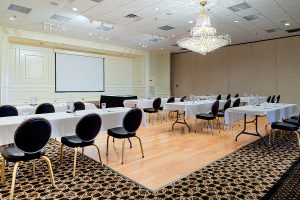 Spring conjures up images of new life. From birds hatching to flowers blooming to trees re-growing their leaf canopy. No matter the species, all living things need three things to thrive - food, water, and a hospitable habitat.
Spring conjures up images of new life. From birds hatching to flowers blooming to trees re-growing their leaf canopy. No matter the species, all living things need three things to thrive - food, water, and a hospitable habitat.
The idea of greening events is not new. Event planners and venues have been looking for ways to make events more sustainable and reduce the amount of waste produced from these mass gatherings. Reducing paper with mobile apps and providing recycling and composting options are popular ways to shrink a carbon footprint. We wanted to go beyond those tried and true methods and look at events as a living being, examining how to provide the keys to life in a way that benefits not only attendees, but the planet as whole.[Tweet "Event planners and venues have been looking for ways to make events more sustainable. #GovEventsBlog"] Continue reading


 From time to time GovEvents will come across information we feel our members and audience would benefit from. Here's something we wanted to share:
From time to time GovEvents will come across information we feel our members and audience would benefit from. Here's something we wanted to share:
 From time to time GovEvents will come across information we feel our members and audience would benefit from. Here's something we wanted to share:
From time to time GovEvents will come across information we feel our members and audience would benefit from. Here's something we wanted to share:

